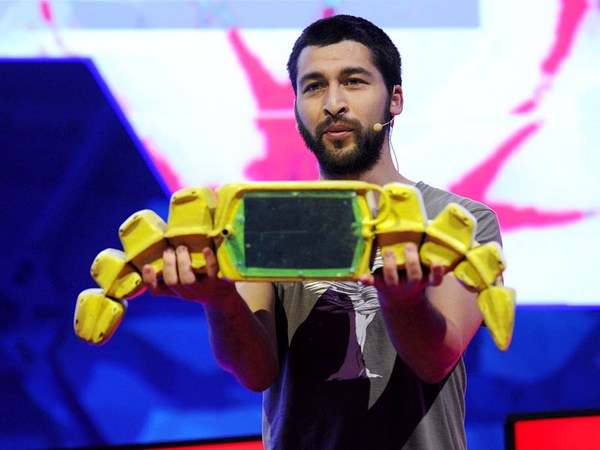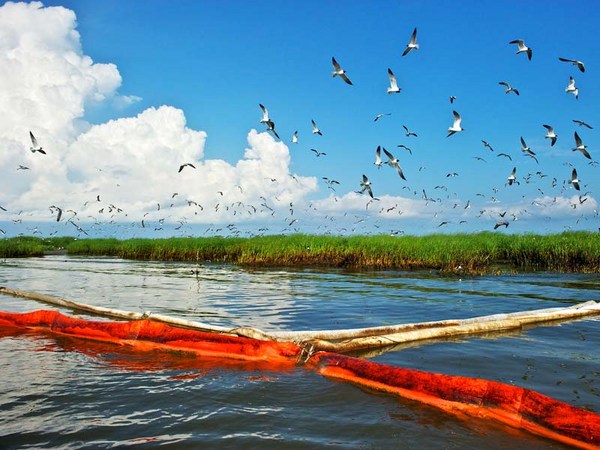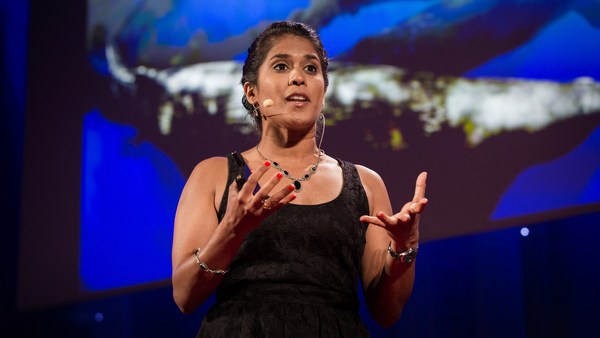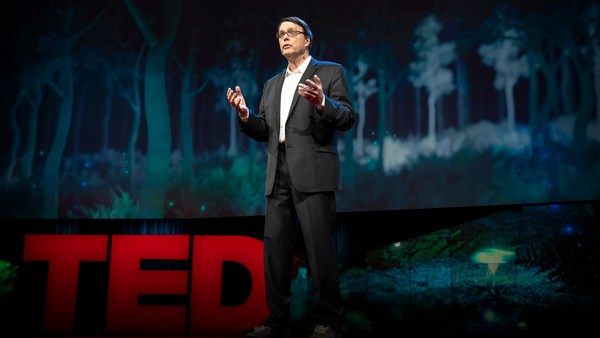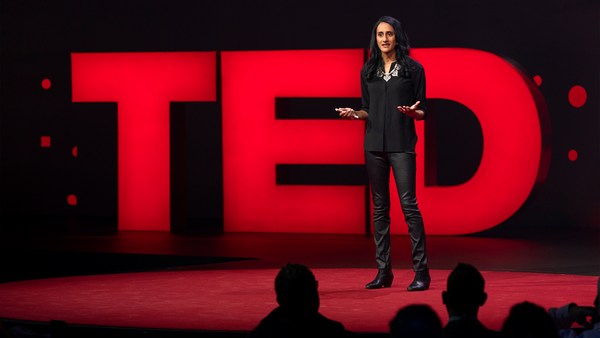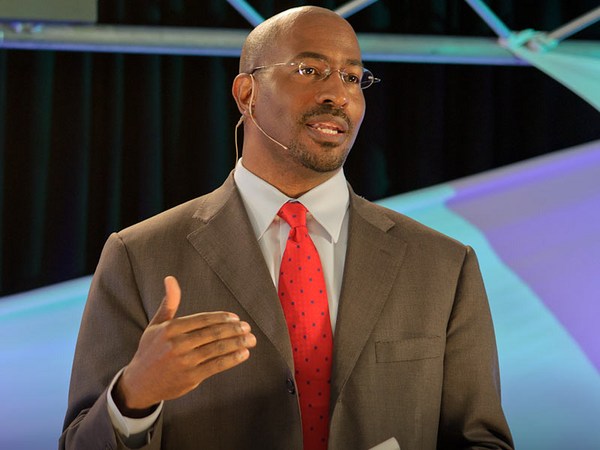When I was a kid, my parents would tell me, "You can make a mess, but you have to clean up after yourself." So freedom came with responsibility. But my imagination would take me to all these wonderful places, where everything was possible. So I grew up in a bubble of innocence -- or a bubble of ignorance, I should say, because adults would lie to us to protect us from the ugly truth. And growing up, I found out that adults make a mess, and they're not very good at cleaning up after themselves.
Fast forward, I am an adult now, and I teach citizen science and invention at the Hong Kong Harbour School. And it doesn't take too long before my students walk on a beach and stumble upon piles of trash. So as good citizens, we clean up the beaches -- and no, he is not drinking alcohol, and if he is, I did not give it to him.
(Laughter)
And so it's sad to say, but today more than 80 percent of the oceans have plastic in them. It's a horrifying fact. And in past decades, we've been taking those big ships out and those big nets, and we collect those plastic bits that we look at under a microscope, and we sort them, and then we put this data onto a map. But that takes forever, it's very expensive, and so it's quite risky to take those big boats out.
So with my students, ages six to 15, we've been dreaming of inventing a better way. So we've transformed our tiny Hong Kong classroom into a workshop. And so we started building this small workbench, with different heights, so even really short kids can participate. And let me tell you, kids with power tools are awesome and safe.
(Laughter)
Not really. And so, back to plastic. We collect this plastic and we grind it to the size we find it in the ocean, which is very small because it breaks down. And so this is how we work. I let the imaginations of my students run wild. And my job is to try to collect the best of each kid's idea and try to combine it into something that hopefully would work. And so we have agreed that instead of collecting plastic bits, we are going to collect only the data. So we're going to get an image of the plastic with a robot -- so robots, kids get very excited. And the next thing we do -- we do what we call "rapid prototyping." We are so rapid at prototyping that the lunch is still in the lunchbox when we're hacking it.
(Laughter)
And we hack table lamps and webcams, into plumbing fixtures and we assemble that into a floating robot that will be slowly moving through water and through the plastic that we have there -- and this is the image that we get in the robot. So we see the plastic pieces floating slowly through the sensor, and the computer on board will process this image, and measure the size of each particle, so we have a rough estimate of how much plastic there is in the water.
So we documented this invention step by step on a website for inventors called Instructables, in the hope that somebody would make it even better.
What was really cool about this project was that the students saw a local problem, and boom -- they are trying to immediately address it.
[I can investigate my local problem]
But my students in Hong Kong are hyperconnected kids. And they watch the news, they watch the Internet, and they came across this image. This was a child, probably under 10, cleaning up an oil spill bare-handed, in the Sundarbans, which is the world's largest mangrove forest in Bangladesh. So they were very shocked, because this is the water they drink, this is the water they bathe in, this is the water they fish in -- this is the place where they live. And also you can see the water is brown, the mud is brown and oil is brown, so when everything is mixed up, it's really hard to see what's in the water. But, there's a technology that's rather simple, that's called spectrometry, that allows you see what's in the water. So we built a rough prototype of a spectrometer, and you can shine light through different substances that produce different spectrums, so that can help you identify what's in the water. So we packed this prototype of a sensor, and we shipped it to Bangladesh. So what was cool about this project was that beyond addressing a local problem, or looking at a local problem, my students used their empathy and their sense of being creative to help, remotely, other kids.
[I can investigate a remote problem]
So I was very compelled by doing the second experiments, and I wanted to take it even further -- maybe addressing an even harder problem, and it's also closer to my heart.
So I'm half Japanese and half French, and maybe you remember in 2011 there was a massive earthquake in Japan. It was so violent that it triggered several giant waves -- they are called tsunami -- and those tsunami destroyed many cities on the eastern coast of Japan. More than 14,000 people died in an instant. Also, it damaged the nuclear power plant of Fukushima, the nuclear power plant just by the water. And today, I read the reports and an average of 300 tons are leaking from the nuclear power plant into the Pacific Ocean. And today the whole Pacific Ocean has traces of contamination of cesium-137. If you go outside on the West Coast, you can measure Fukushima everywhere. But if you look at the map, it can look like most of the radioactivity has been washed away from the Japanese coast, and most of it is now -- it looks like it's safe, it's blue. Well, reality is a bit more complicated than this.
So I've been going to Fukushima every year since the accident, and I measure independently and with other scientists, on land, in the river -- and this time we wanted to take the kids. So of course we didn't take the kids, the parents wouldn't allow that to happen.
(Laughter)
But every night we would report to "Mission Control" -- different masks they're wearing. It could look like they didn't take the work seriously, but they really did because they're going to have to live with radioactivity their whole life. And so what we did with them is that we'd discuss the data we collected that day, and talk about where we should be going next -- strategy, itinerary, etc... And to do this, we built a very rough topographical map of the region around the nuclear power plant. And so we built the elevation map, we sprinkled pigments to represent real-time data for radioactivity, and we sprayed water to simulate the rainfall. And with this we could see that the radioactive dust was washing from the top of the mountain into the river system, and leaking into the ocean. So it was a rough estimate.
But with this in mind, we organized this expedition, which was the closest civilians have been to the nuclear power plant. We are sailing 1.5 kilometers away from the nuclear power plant, and with the help of the local fisherman, we are collecting sediment from the seabed with a custom sediment sampler we've invented and built. We pack the sediment into small bags, we then dispatch them to hundreds of small bags that we send to different universities, and we produce the map of the seabed radioactivity, especially in estuaries where the fish will reproduce, and I will hope that we will have improved the safety of the local fishermen and of your favorite sushi.
(Laughter)
You can see a progression here -- we've gone from a local problem to a remote problem to a global problem. And it's been super exciting to work at these different scales, with also very simple, open-source technologies. But at the same time, it's been increasingly frustrating because we have only started to measure the damage that we have done. We haven't even started to try to solve the problems. And so I wonder if we should just take a leap and try to invent better ways to do all these things.
And so the classroom started to feel a little bit small, so we found an industrial site in Hong Kong, and we turned it into the largest mega-space focused on social and environmental impact. It's in central Hong Kong, and it's a place we can work with wood, metal, chemistry, a bit of biology, a bit of optics, basically you can build pretty much everything there. And its a place where adults and kids can play together. It's a place where kids' dreams can come true, with the help of adults, and where adults can be kids again.
Student: Acceleration! Acceleration!
Cesar Harada: We're asking questions such as, can we invent the future of mobility with renewable energy? For example. Or, can we help the mobility of the aging population by transforming very standard wheelchairs into cool, electric vehicles?
So plastic, oil and radioactivity are horrible, horrible legacies, but the very worst legacy that we can leave our children is lies. We can no longer afford to shield the kids from the ugly truth because we need their imagination to invent the solutions.
So citizen scientists, makers, dreamers -- we must prepare the next generation that cares about the environment and people, and that can actually do something about it.
Thank you.
(Applause)
